A Beginner’s Guide to Kitesurfing
Kitesurfing is the world’s fastest growing extreme sport, and for good reason; it’s exhilarating, quick to learn and above all, really fun!
Kitesurfing is an exhilarating water sport that combines aspects of surfing, windsurfing, and wakeboarding. While the initial learning curve can be a bit challenging, you’ll quickly transition from a total beginner to confidently gliding across the water and having a blast. The key to a smooth and enjoyable learning experience lies in using the right gear—a suitable kite, board, and harness—choosing the right location, and learning from a qualified kiteboarding instructor. With the right preparation and guidance, you’ll be up and riding in no time!
Follow this 5-step guide to fast-track your kitesurf progression. You’ll save money on the extra lessons you don’t need and you’ll take the frustration out of the early stages of the learning phase.
Step 1: Learn to fly a trainer kite
A trainer kite is a small 2 to 3 meter traction kite that will allow you to safely learn the basics of kite flying before you hit the water. Typically, a trainer kite will be smooth and stable to fly with predictable response and power to ensure easy progression into all kite sports. It’s an excellent way to learn about the wind window and the power zone, which you need to understand for kitesurfing.
Traction kites generally have 2 or 4 lines, but 3 line models do exist such as the Ozone Ignition which uses the third line for safety. A 3 m2 kite is ideal, but take care in very strong winds as even this small size can drag you along or even lift you off your feet.
If you master your basic kite skills on a trainer kite before your kitesurfing lessons, you’ll save loads of time and money, and you can always use it later for mountain boarding or snow kiting, or lend it to friends when you’re out on the water!
This video from KiteSurfCo provides a good introduction to the wind window and how to set up and fly your trainer kite:
Step 2: Dig out your old skateboard
There’s a huge amount of crossover in boardsports and getting good at sports like wakeboarding, skateboarding, surfing and snowboarding will mean that you’ll be instantly more at ease on your kiteboard. The advantage of being comfortable with the board is that you can focus on flying the kite rather than keeping your balance on the board. Wakeboarding is without doubt the closest sport to kitesurfing as the board is very similar. So, get down your nearest cable-ski centre and get comfortable riding a wakeboard. It’s a sure-fire way to fast track your progression during your kitesurfing lessons.
Step 3: Watch some instructional kitesurfing videos
Watch as many videos on learning to kitesurf as you can. They’ll help you progress much faster when you come to take lessons. There are loads of great videos out there that teach you the basics. I can recommend the instructional kitesurfing series from Progression which take you from beginner to professional in 5 videos available on DVD or digital download. Otherwise check out YouTube and it doesn’t do any harm to watch a few different clips on the same subject. Remember, videos are never intended to be used as a substitute for professional kiteboarding instruction.
The series of videos from Progression Sports aim to get you up to speed before your lessons or refresh your memory of everything you’ve learned under instruction.
For a flavour, here’s the Progression Kiteboarding intro video:
Step 4: Get some kitesurfing lessons from a qualified instructor
Don’t miss this step! Getting lessons from a qualified kitesurf instructor is undoubtedly the best way to progress quickly and safely. The good news is that if you’ve given yourself a head start by following the first 3 steps in this guide, you’ll cut down the teaching time dramatically.
Typically, a 3-day, 4 hour per day course should see you up and riding with confidence. An instructor will correct mistakes quickly and stop bad habits from forming.
Kitesurfing lessons are typically broken down into learning stages to help you progress and develop the skills and knowledge to safely enjoy the sport:
Introduction and Equipment Setup
The first step is to introduce you to the kitesurfing equipment, including the kite itself, control bar, lines, harness, and board. Your kitesurf instructor will explain the purpose of each component and demonstrate how to properly set up and inspect your gear. There’ll be an emphasis on safety protocols, such as checking the lines for knots and tangles, and ensuring the harness is fitted correctly.
Beach Piloting and Safety Precautions
Before taking to the water, beginners are taught the fundamentals of piloting the kite on the beach. This involves learning about the wind window and how to safely launch and land the kite. Once you have the kite overhead in the neutral position, you’ll learn how to move the kite around and dip it in and out of the power zone. Safety precautions, such as maintaining a safe distance from other beachgoers and understanding wind conditions, are also covered. Once you can comfortably launch and land the kite and control it through a figure of eight, you’re ready to get on the water.
Kite Control and Body Dragging
With a basic understanding of kite control, you’ll move onto flying the kite in shallow water and practice generating power from the kite. By dipping the kite in and out of the power zone, you’ll soon start getting a feel for the power, and control it to drag yourself through the water. Eventually, you’ll be able to body-drag upwind. This body-dragging stage is a critical step, which you’ll use throughout your progression.
Water Re-Launch and Self-Rescue
On occasion, you’ll lose control of your kite and it will crash into the water. Being able to re-launch the kite is an essential skill to master. You’ll learn to manipulate the kite to guide the leading edge out of the water and to the edge of the wind window. Then, with a tweak on the control bar and a bit of finesse, you can get the kite airborne again.
In cases where the kite cannot be re-launched due to tangled lines or other issues, knowing self-rescue techniques is crucial. These techniques involve using your kite as a floatation device and performing controlled body drags to retrieve your board and return to shore safely.
Introduction to the Board
As you become better at controlling the kite on the water, you’ll start to incorporate the board. You’ll learn how to position the board under your feet with the kite in a neutral position directly overhead. In this position you’re ready to attempt your first water start.
Water Start and First Board Ride
Once you’ve gained confidence in body dragging and you’re comfortable with the board, you’re ready for your first ride. Your instructor will guide you through the process of getting on the board, using the kite’s power to control speed, and maintaining balance while riding on the water’s surface. This phase marks a significant milestone in the learning process and is an exciting moment for learners.
Riding and Staying Upwind
Riding and mastering the technique of staying upwind mark the transition from basic skills to a more advanced phase of kitesurfing. Riding involves coordinating the control of the kite and the board to glide smoothly on the water’s surface. You’ll learn to ride straight across the wind and switch direction to come back more or less to your starting point. As you gain proficiency, the focus shifts to staying upwind, a skill that allows you to explore the open water and fully enjoy the freedom of the sport. You’ll learn to get the kite in the right position and adjust your body position on the board so the rail tracks upwind. The ability to stay upwind not only enhances your overall enjoyment of kitesurfing but also opens up the opportunity to explore new spots.
Kitesurfing is an extreme sport and can be dangerous if it’s not given the respect it deserves. A 12 m kite accidentally pitched into the power zone can, if you’re not familiar with the kite’s safety system, end with you being dragged up the beach, or worse. Even if you think you can learn on your own, teaching yourself will never replace the benefit of getting lessons. Plus, kite schools have access to loads of gear that will allow you to use a kite perfectly adapted to the spot, the day’s conditions, and your skill level.
Be safe, have fun and get some lessons.
Step 5: Buy kitesurfing gear adapted to your level and local conditions
When you start out you’ll crash the kite – everybody does. Master your kite flying skills on a trainer kite as they’re a bit tougher and don’t have an inflatable leading edge.
Then you’ll be using the kitesurf school’s gear and it’s likely to get a good thrashing, which is a good reason for getting lessons before you invest in your own gear.
After your lessons, ask your school if they have any second hand gear for sale. They’ll often give you a good deal if you’ve done your course with them. In any case when you’re new to the sport it’s almost pointless buying brand new kit, it’ll just get trashed…
FAQ
Contrary to popular belief, you don’t need to be super-fit to kitesurf. You’ll often see little 10 year old kids out on the water. Girls especially shouldn’t be put off by the preconception that you need massive biceps. It’s simply not true, with the right kite nearly everyone can kitesurf. It’s not really your arms that take the strain – the pull of the kite goes through your harness, so it’s your core that gets the workout. Having said that, you need to be comfortable in the water and you do need a reasonable level of fitness.
The essential kitesurfing gear you need includes a kite, bar and lines, a harness and a board. If you’re buying new gear you need to allow about 1500 to 2000 GBP / 1700 to 2300 EUR for the full kit depending on the brand and spec you want. If you go for the previous year’s model you can often find some good discounts of 30 to 40% off the RRP.
There’s also lots of second hand gear available and it’s possible to get fully kitted out for around 500 GBP / 580 EUR. With second hand kites, you just need to know the year it was manufactured. Kites have evolved so much in recent years that when it comes to performance there’s quite a big difference between a new kite and one that’s 5 years old. Older kites tend to have less de-power (a key safety feature) and are more difficult to relaunch.
In addition to the kiting kit, you’ll also need a wetsuit and maybe some neoprene booties, and a helmet and buoyancy aid. If you’re buying new you need to allow about 250 to 300 GBP for all that.
If you are keen to take up and continue the sport we would recommend a 3-day kitesurf course to become more independent. Expect to pay about 290 GBP / 330 EUR which would include about 4 hours per day of tuition and all the gear you need.
You can be up and riding with confidence in 3 days.
Kitesurfing is one of those rare sports that’s actually a lot easier than it looks. If you’ve flown a power kite and you’ve had a go at skateboarding, snowboarding or wakeboarding, you’re already more than halfway there. Typically, a 3-day, 4 hour per day course should see you up and riding with confidence. You’ll then need to get as much practice as possible to consolidate your skills and get comfortable riding up wind. The ability to ride upwind means you can stay out of trouble, avoid any hazards and get back to where you started.
The following tips have been provided by Tantrum Kitesurf:
Extra Tip: Plan to learn somewhere that is similar to your local spot
Are you trying to choose between the hundreds of different schools and different locations all offering perfect wind, the best kit and super short training times. How can you possibly find the course that’s best for you?
Firstly, ask yourself the question, where are you going to be kitesurfing 90% of the time?
Of course all of us would love to be dashing of to remote, exotic locations with perfect wind and Pina Colada’s on tap every other week. The reality for most of us is somewhat different, and we find ourselves having to kitesurf wherever our nearest accessible bit of water happens to be.
Often this location won’t be glass flat, with a perfect 25 knots blowing over the top of it. Realising this, my advice would be to learn somewhere with similar conditions to where you are going to kite on a regular basis. If you learn on a flat, waist deep lagoon, sure your time under instruction will be shortened, however will you still be able to do everything you were doing out there when you return to the dumping shore break and choppy conditions of your local spot… I would say not.
This can lead to huge amounts of frustration and leads many to give up before they’ve even started. Of course if your local spot is a flat, waist deep lagoon then perfect, but then why would you take kitesurfing lessons anywhere else?!
Kitesurfing instruction on an International level is organised and controlled by the International Kitesurfing Organisation or IKO. Any school which is affiliated with the IKO has to have insurance and adhere to safety and teaching standards set down by the IKO.
The schools will most likely display their affiliation on their website or at least in their base of operations. If in doubt about a school or instructor you can check whether they are an official centre or official instructors on the IKO website, where all registered schools and instructors are listed for public viewing. Many countries now have a national level body as well, for example, the BKSA in the UK or the FFVL in France.
Kitesurf schools affiliated with these national bodies have to (in theory at least) meet equally strict standards as those to the IKO, so you can be sure they meet the latest standard for teaching methodology, insurance and equipment. Of course, this doesn’t mean that schools operating without affiliation are fundamentally bad, many schools have very good reason for not affiliating but it acts as a good guide to which schools are legitimate schools and which could more fly by night in nature.
Following these simple guidelines you can start to narrow down the field and hopefully pick a place to take your kitesurfing lessons that sees you not only learning safely, quickly and enjoyably but that also gives you the greatest chance of progressing when you get back home.
Please leave a comment below if you need any more advice on learning to kitesurf, or if you have anything to add to help improve this guide. Have fun!

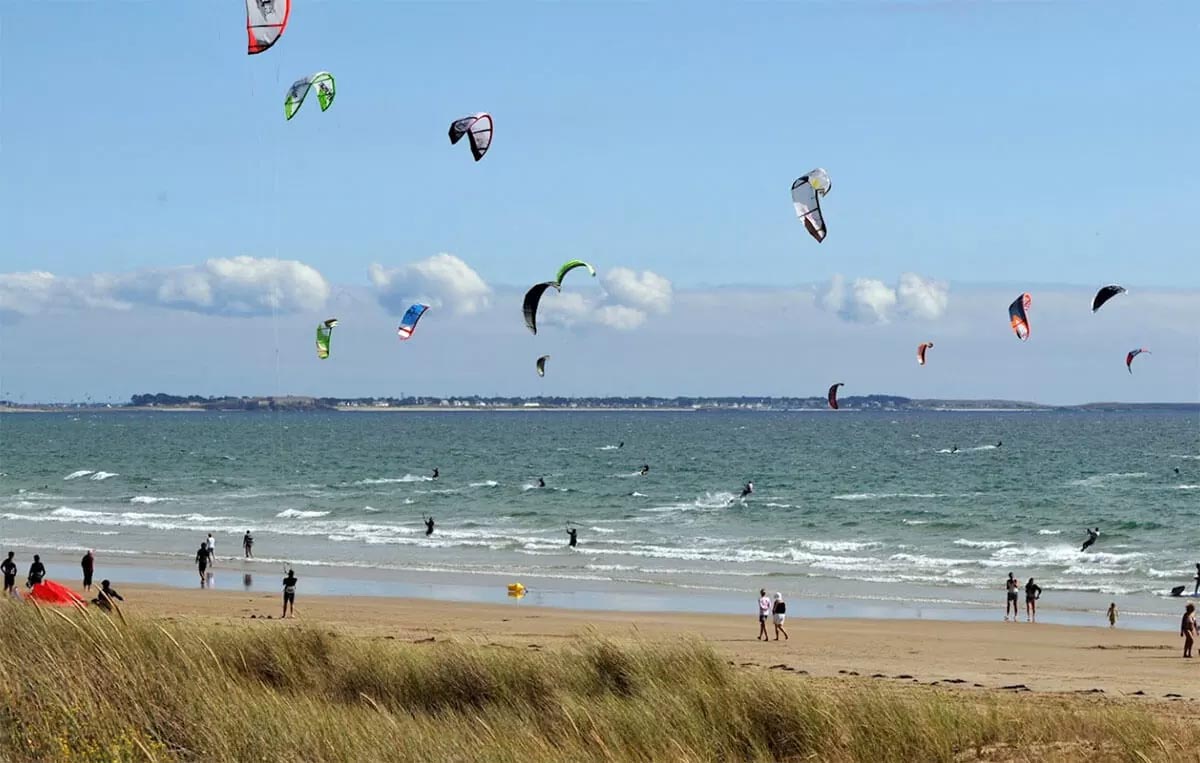
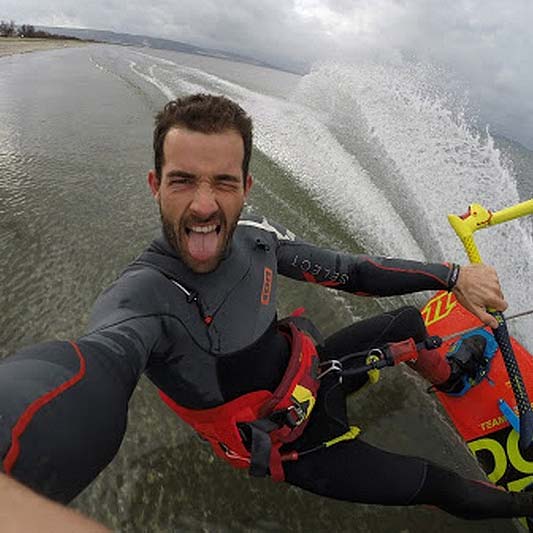
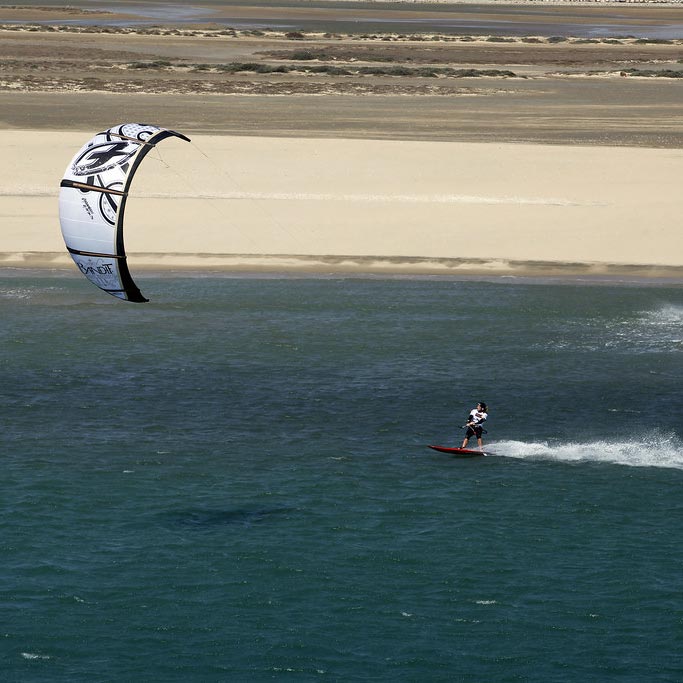
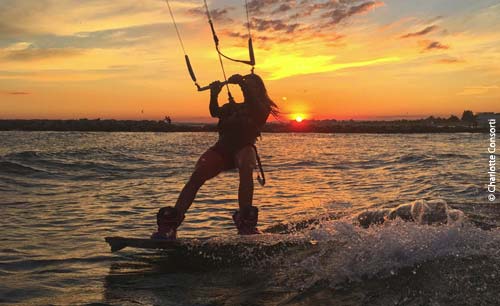

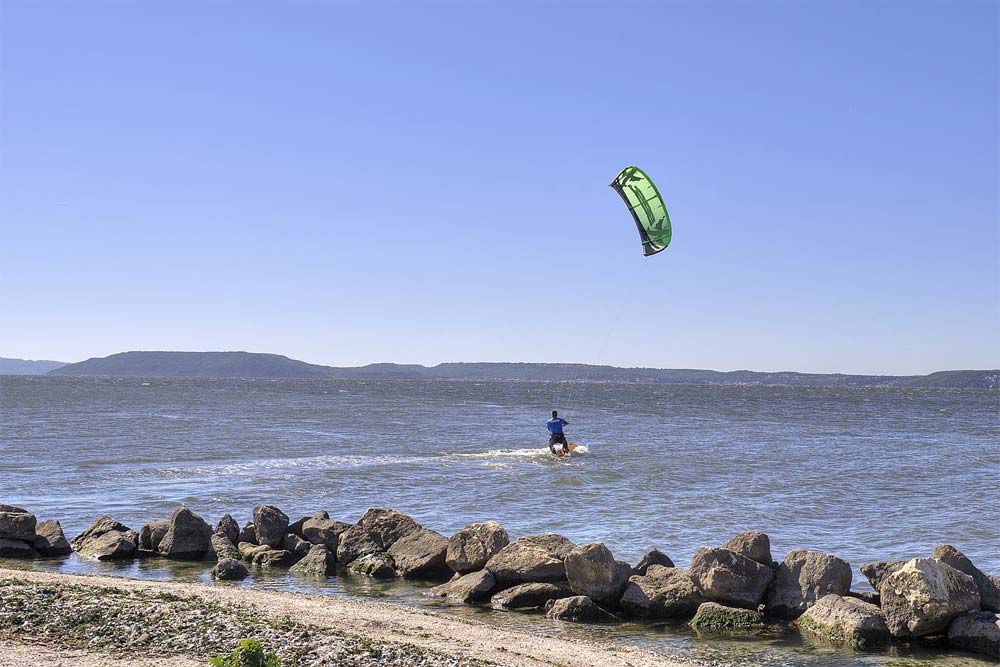

Hi,
My brother started kitesurfing recently. He’s 50. where can I find second hand gear to offer him? Thanks
Hi Sara, thanks for your comment!
I’ve found that one of the best places to look for second hand kitesurf gear is Facebook Marketplace. Or, of course there’s eBay or your local small ads site such as Gumtree in the UK. Good luck and hope that helps!
Hi, Thanks for the info!
I am heading to Cabarete, Dominican Republic at the end of the month for four months! I can’t wait to learn kiteboarding! I’ve been dreaming, planning and training for this moment! 😀